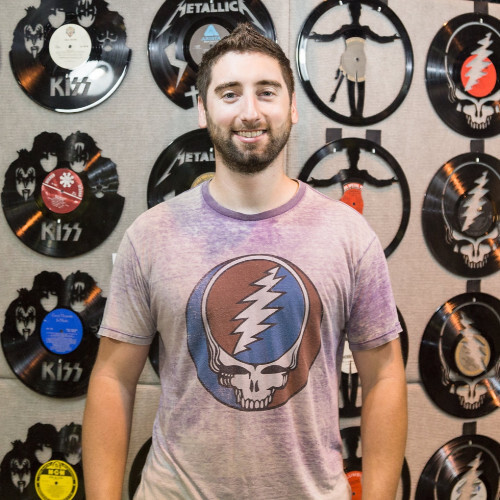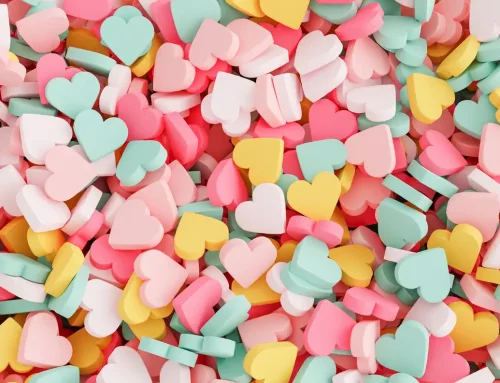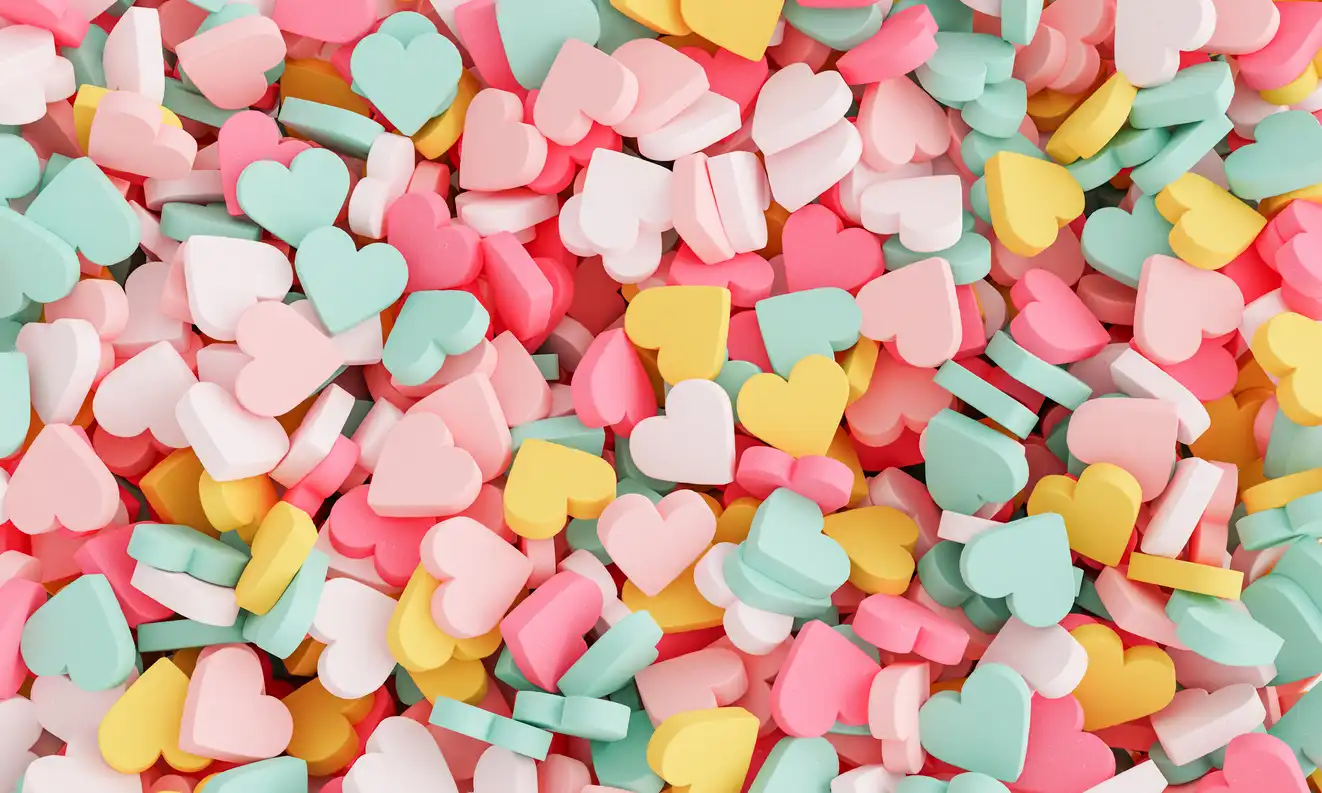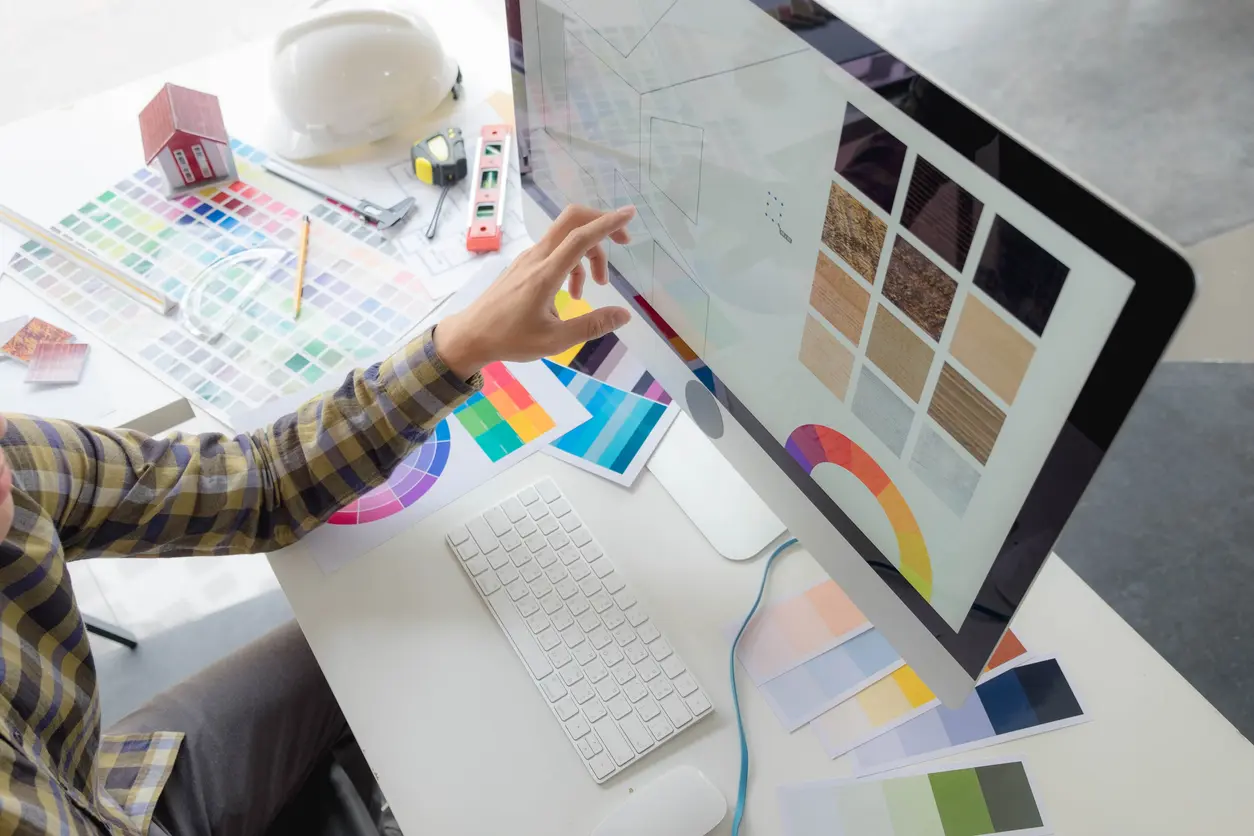Q. What made you want to pursue this creative field with your artwork?
A. I am very into music and kind of just stumbled into it. I met a guy who was making drink coasters out of the 45s and thought of the idea. I thought it would be so cool to carve art into a record. I also had a ton of vinyl that was messed up, so it was a great way to upcycle them.
Q. Tell us about your timeline where you began your art career and where you are now?
A. I began my art career when I was 20, making custom duct tape wallets with artwork on them. I did that for several years traveling all over the country and selling them. It was a great business and really was a lot of fun. Transitioning to now, I’ve made some strides. I’ve sold pieces to musicians, had a piece that went to auction at the Musicares Auction at the Grammys, and even made a 5′ x 5′ piece for RIAA who certify all the gold and platinum artists all over the world!
Q. Do you have any artist/(s) you look up to? If so who?
A. Ron
Q. What is the best piece of advice you’ve ever received and given?
A. Know when to listen to others, know when to trust yourself.
Sometimes I am two people. Johnny is a nice one. Cash causes all the trouble. They fight. – Johnny Cash
Q. What is your process starting one of your vinyl record projects?
A. It starts with getting the records. I am constantly buying records of music I think I can use to create artwork. Then I lay them out and figure out where the labels for each record goes. I combine them together which can take up to a full 24 hours. Then, I carve out the design of the record, which can take days sometimes. I have to be careful not to bend or heat up the records too much due to the toxicity they can produce. Sanding would be the next step, taking fine grit and hand-sanding each edge of the piece. Sometimes this can be the most tedious part of the entire process because there are very tight gaps I have to squeeze the sandpaper through to get a smooth edge. The piece is mounted onto a white panel with the frame.
Q. What were the biggest challenges getting to where you are now and how did it affect you?
A. It’s crazy that I have to cut it pretty close to perfect because if a record breaks, I will most likely have to start with a whole new set of records. The worst part of that is if there are records I only have one of, it will cause the project to be delayed a few weeks while trying to find that same record or something similar.
Q. What are your inspirations for your pieces?
A. Musicians that made you think. Sometimes you can hear a song and it gives you a memory or feeling that moves you. Those are what I try to recreate when you look at one of my pieces.
Q. Where do you see yourself with your artwork in the future?
A. My goal with my artwork is to have pieces all over the world, maybe in the Rock N’ Roll Hall of fame. I’ve always wanted to do a large mural, inside of course because of the records.
Q. What is your favorite artwork and why?
A. Graffiti, I like the “rawness” of it and how it has transformed into a fine art now.
Q. Is there any specific charity/causes you support currently or would like to contribute to in the near future?
A. Musicares and Playing for Change. MusiCares is a charity that has provided help in health, financial, and rehabilitation resources to music people in times of need.
Q. What made you want to pursue this creative field with your artwork?
A. I am very into music and kind of just stumbled into it. I met a guy who was making drink coasters out of the 45s and thought of the idea. I thought it would be so cool to carve art into a record. I also had a ton of vinyl that was messed up, so it was a great way to upcycle them.
Q. Tell us about your timeline where you began your art career and where you are now?
A. I began my art career when I was 20, making custom duct tape wallets with artwork on them. I did that for several years traveling all over the country and selling them. It was a great business and really was a lot of fun. Transitioning to now, I’ve made some strides. I’ve sold pieces to musicians, had a piece that went to auction at the Musicares Auction at the Grammys, and even made a 5′ x 5′ piece for RIAA who certify all the gold and platinum artists all over the world!
Q. Do you have any artist/(s) you look up to? If so who?
A. Ron
Q. What is the best piece of advice you’ve ever received and given?
A. Know when to listen to others, know when to trust yourself.
Q. What is your process starting one of your vinyl record projects?
A. It starts with getting the records. I am constantly buying records of music I think I can use to create artwork. Then I lay them out and figure out where the labels for each record goes. I combine them together which can take up to a full 24 hours. Then, I carve out the design of the record, which can take days sometimes. I have to be careful not to bend or heat up the records too much due to the toxicity they can produce. Sanding would be the next step, taking fine grit and hand-sanding each edge of the piece. Sometimes this can be the most tedious part of the entire process because there are very tight gaps I have to squeeze the sandpaper through to get a smooth edge. The piece is mounted onto a white panel with the frame.
Q. What were the biggest challenges getting to where you are now and how did it affect you?
A. It’s crazy that I have to cut it pretty close to perfect because if a record breaks, I will most likely have to start with a whole new set of records. The worst part of that is if there are records I only have one of, it will cause the project to be delayed a few weeks while trying to find that same record or something similar.
Q. What are your inspirations for your pieces?
A. Musicians that made you think. Sometimes you can hear a song and it gives you a memory or feeling that moves you. Those are what I try to recreate when you look at one of my pieces.
Q. Where do you see yourself with your artwork in the future?
A. My goal with my artwork is to have pieces all over the world, maybe in the Rock N’ Roll Hall of fame. I’ve always wanted to do a large mural, inside of course because of the records.
Q. What is your favorite artwork and why?
A. Graffiti, I like the “rawness” of it and how it has transformed into a fine art now.
Q. Is there any specific charity/causes you support currently or would like to contribute to in the near future?
A. Musicares and Playing for Change. MusiCares is a charity that has provided help in health, financial, and rehabilitation resources to music people in times of need.












